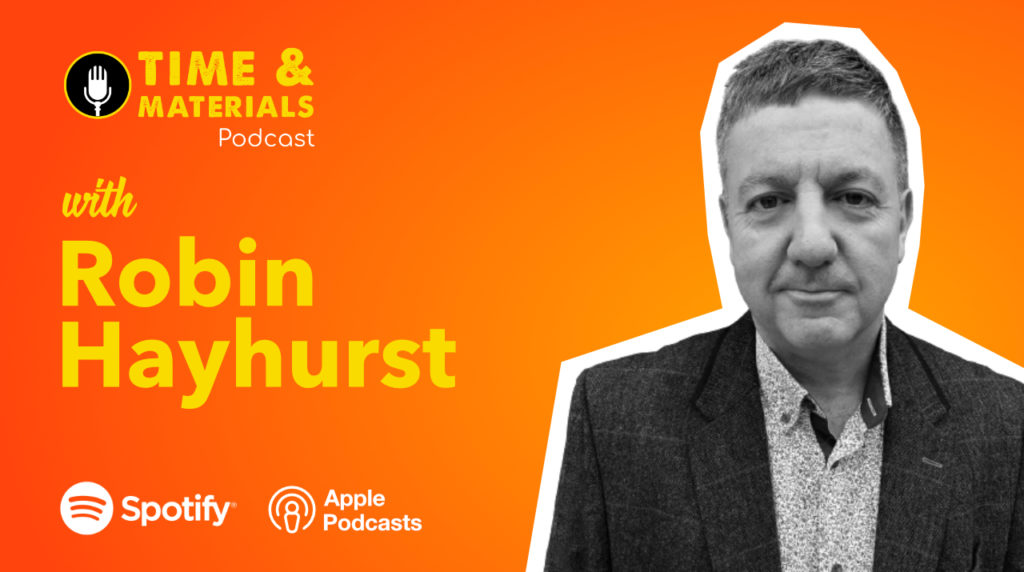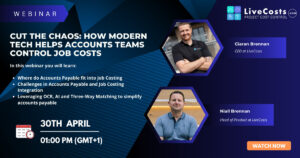Episode 41 – Robin Hayhurst
Robin Hayhurst, UK Construction Business Coach
Robin offers one-to-one coaching and mastermind groups to help developers and contractors alike to thrive and grow in both the good and the challenging times.
Podcast Highlights
Why do construction business owners engage in a business coach?
Robin:
So it just gives me that overall view, which made me uniquely qualified to become managing director, because I was able to understand everybody’s perspective and the jobs they did.
Ciaran:
Yeah. It’s interesting, because the model, obviously, we’re based out in Ireland here, but the UK model is very much… The Irish model and the UK model are very similar. And I learned that from time I spent in Australia, whereby the Aussie model is very structured. Even down into the trade where, as a carpenter, for example, the carpentry trade was brokne into, first fix carpentry, second fix carpentry, roofing carpentry, we even had guys going around saying that they were skirting board carpenters, and for me, that was just absolutely foreign. A carpenter, a joiner, our trade is carpentry, joinery, you cover the whole lot and then eventually, in time, you might niche in, but you are absolutely capable of covering the lot.
I mean, that’s interesting that you speak about that. I mean, I imagine the experience that brought you, that as you started to work with these companies… I suppose that’s a question. Why do developers and contractors across the UK come to you for help?
Robin:
It’s a mixture. Some of them have got exactly that, a site background. They’ve never trained in or been taught how to run a company. And it’s a different skillset. Easily learnt, you can learn it, just a system really, but they haven’t got that background. They’ve become very good at their trade and said, “Ooh, okay, I’ll start a company.” And they haven’t got a business degree and they haven’t done this, and they haven’t… So I try and fill that gap in and get them into a system that allows them to run the company successfully, because the fail rate, maybe for that reason, I think, is really, really high for companies, particularly our industry.
The other sector of people that come to me are people that are doing all right, they’ve done quite well. They might be a contractor, they want to go into development. Well, I’ve spent 20 years finding sites, developing, building out, so I can help them make that leap from contractor to developer.
What are the biggest mistakes companies make in submitting their tenders?
Ciaran:
I always talk about the little percentages that I think make a difference, because most of us are skilled and we’re trained well in our trades, and we can deliver a project. And that bit tends to be taken as a given by a client that you can deliver. But it’s these little one percents that’ll make the difference.
On the tendering side, what do you see there? I mean, what are the top mistakes you see companies in the UK make in the tendering process?
Robin:
Well, I think this is very similar nationwide and around the world. Basically, I’ve kind of received a lot of tenders. I tender some big work and I’ve received loads and loads of tenders from different contractors, and they just send a price in, a spreadsheet with a breakdown and a price. It tells me nothing about them. It tells me … It doesn’t tell me what they’re up to, what they can do, why they’re good. It’s really important they send … This is a contact with your client, so it’s important you send a brochure in, that you send information about you, about how you’re going to control the project, as much information as possible. And the kind of take on it from some industries, “Oh, I can’t be bothered to do all that.” Well, you’re not kind of giving yourself a fair chance of winning the site.
Be very careful about what tenders you do, but when you do do them, do them properly. And the other thing, of course, you can do is you can use things like LinkedIn, and just soft touch the client. So all that is just make them aware of you. It’s that little bit of biased, that kind of subconscious bias they will have that might make the difference because they’ve heard of you.
Ciaran:
Yeah. Yeah, absolutely makes a difference. I remember one of our first companies, we were, our weigh in percentage wasn’t good and we just couldn’t understand like, why is this, why are we not winning the work? We’re a good team, we know we can deliver, we do the right things, why is it that we just can’t seem to win as much work as what we think we should be winning for the effort that we’re putting in, well, we believed we’re putting into tenders. And at that time we brought in a coach, believe it or not, and the first thing he looked at, the very first thing he looked at, and I remember him saying to me, “There’s not many problems in business that can’t be resolved by sales. Okay? So we need to look at that first. And how do you tender? What do your proposals look like?” And he pulled them apart. He absolutely pulled them apart, all wrong.
And it came to a point where it was nearly … It was nearly a presentation. It was nearly a full deck of presentation material, pretty much standardized once we got it together in the first instance, there was even elements of it for ones that we really want to go after, where we had a video template showing everything, where we link up to video templates showing everything, and I remember the effort that we put into that and the difference it made, just that little, again, talk about these little one percents that make a difference.
What are the 3 key areas I should focus on to change from chaotic, reactive construction business owner to a happy one in full control
Ciaran:
I’ll put this one to you. I’m a time poor developer or contractor, I’m working in the UK, I’ve got tight margins. I want more time to increase margins so I can have less stress. What are the three key areas, if you were to summarize these three key areas, that I should focus on to make that transition from say, organized chaos to enjoyable, sustainable, happy business owner?
Robin:
Well, financial control’s one the main ones, and that’s a really important part of it. You’ve got to get control of your finances. Some people are scared to do that, it’s like grasping the nettle. But honestly, even if things are bad, they’re not normally as bad as you think they are. So that’s a really important part of it, grabbing that.
The other thing is to put systems in place. Simple systems, we’re not trying to encourage people to do mountains of paperwork, it’s not in anyone’s interest. But systems could also be automation. Computer software, as you’re aware, can help great. And if you can cut out a paperwork system by automating it, you’re saving so much time, and you’re normally being more accurate, because there’s less chance of things being inputted incorrectly. So, I mean, that’s a really important side of it.
And then team. It’s making sure that your team work properly and that they trust each other. That’s not something that just happens. You’ve got to work at it and you’ve got to have a system to move them through, so they can be honest with each other. Brutal honesty is actually really important, and brutal honesty isn’t about being really nasty to each other, it’s just saying, “That’s gone wrong. Why has it gone wrong? Oh, it’s your fault. Well, what can we do to improve that?” The end thing isn’t to blame someone, it’s to find a way of improving what you’re doing. Once the team understand that, that works really well. But the whole team has to trust each other, because otherwise they end up having this blame orientated culture, which is so normal in the construction industry, and they become dysfunctional.
Ciaran:
Yeah. I’m interested in that. I mean, I’m interested that your number one was financial control, because… Just to give you a bit of backstory. I mean, how LiveCosts was actually created was, essentially, we built a system that worked really, really well for our business. Then we decided, “Is this a big enough problem for other companies?” And we decided to go into something that we’d never done before, which is a R&D body of research on a lot of companies across UK, Ireland, Australia, New Zealand, US. What we found was the biggest problem, and we had to refine this question many, many times, but essentially, what we got back to was, we used to have a series of questions, survey companies, but really, we were able to summarize this down to one question by the time we actually got into it a bit, and it was, what was the one problem that keeps you awake at night time?
We asked hundreds of business owners, what was the one problem that keeps you awake at night time? And that was it, finances. So when we decided that… A lot of companies were saying, “I just don’t know whether this project’s making money or not. And that’s what keeps me awake, is I’m worried about, what’s the knock on effect of this project onto the next project, whenever it might be?” That’s absolutely where LiveCosts was born. We said, “Okay, really, what people want is they want live financial data.” So I’m very interested that your top key area that you would look at first would be in the finances.
Systems. Let’s just actually throw one in there as well, a little tip for people that are listening there. What we’ve developed, that’s worked quite well, is if the team starts to grow and the company starts to grow, and you have different people in different areas, very skilled at what they do, and you can have that fear that, “Well, if John or Sarah ever leave us, do we understand fully what they do?” And it’s just a simple tip there. We created a Google Drive folder, where we got people to document what they do through video. So literally sharing screens and saying, “This is how I process an invoice. This is how I onboard a new employee. This is how I do…” And it’s filed and it’s a system, it’s essentially a system. I mean, that allows companies to scale. So now, when new employees come in, they’re following a video, a piece of content. Plus, if Sarah or John decide to leave, it doesn’t leave the company with a gaping hole.



